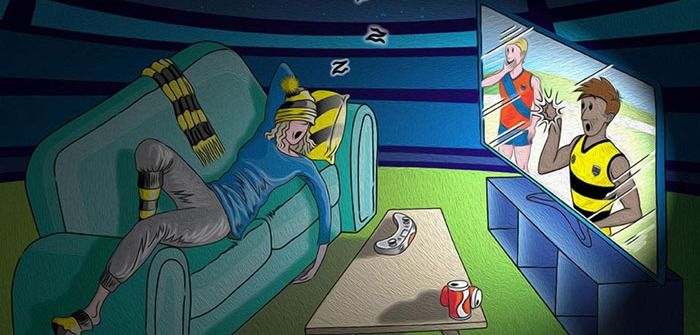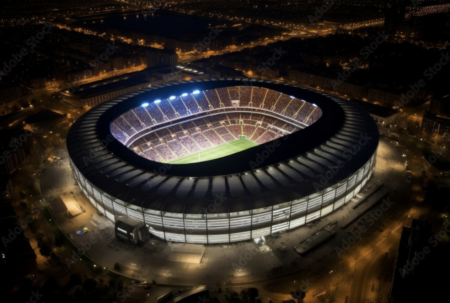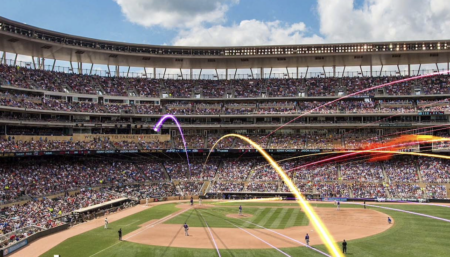Over the coming months, sport is going to realize how much it values and misses its spectators. In a recent blog post, engineering and design company Aurecon explores how clubs can replace the atmosphere of fans in the stands, and what will need to happen when they return.
Home advantage is a term commonly used in the circles of sports design. Architects and engineers have long known the symbiosis between the players and their fans. Through good design, we can bring fans back to a stadium, create an electric atmosphere, and success on the field. Without this force multiplier, who will be the relative winners and losers: smaller teams without their close intermediating crowds, or bigger clubs without their numerical advantage? As action restarts, will we be discussing lockdown advantage?
With stadiums sitting empty, clubs and operators are going to have to compete that little bit harder for the attention of the newly-freed paying audience. How will clubs replace the drama?
Even the most tranquil of sports, English county cricket is considering piping in spectator cheering and clapping. Just imagine the Zoom stadium. Instead of grandstands, giant media screens feeding the players live images of tens of thousands of lockdown fans across the world.
When stadia reopen how will operators use design and technology to protect their assets from the next emerging crisis? The design and commercial operation of airports fundamentally changed after 9/11. Extra security measures meant more time queuing for scans, whereas e-tickets reduced the time taken to check-in.
By pushing the balance of a passenger’s time from landside to airside, airports created a bigger captive market opportunity to sell a wider range of products. The next 20 years of aviation saw massive global expansion in air travel and defied commentators’ fears in the aftermath of the tragedy. Markets have grown with greater passenger revenue enabled by lower upfront ticket prices.
Many outdoor and endurance sports are Phase 3.5 and social distancing ready. At 3500 km long, the Tour de France has space for 3.5 million spectators. By comparison, tightly packed stadium operators must think carefully about how to minimize lost seating and so re-engineer their viewing areas, facilities, wayfinding and spectator journeys.
After this watershed moment, seating and access aisles will almost certainly need to become adaptable to grow and shrink in-line with the latest medical guidance. Likewise, toilets, turnstiles and checkpoints need to be dispersed wider (or virtual) and connect directly to digital wayfinding apps.
Luckily, many stadium operators have been increasing the digital connectivity of their stadiums. But for those that haven’t, the need to digitally track tens of thousands of spectators will be a catalyst for the expansion of digital services. In the pursuit of event atmosphere and trending presence, operators will use mobile devices to track acoustic and online noise. Can this data be analyzed, and artificial intelligence harnessed to identify, attract and incentivize the most valuable fans?
Of course, fewer spectators means lower ticket revenue, but across entertainment industries the concept of missing out, scarcity, and clever digital marketing has led to higher ticket prices and more revenue per customer. Stadium designers know that spend per head increases where there is more concourse space for the club to curate a better service offering. With capacity cut, existing stadia will have more space to sell higher value experiential services.
Back at Zoom Stadium, the operators may have taken a lead from e-gaming and online commerce to create a wider audience base. Without the travel risk of infectious disease transmission and logistical burden of shifting thousands of spectators into large grandstands, stadia could be adapted quickly to host multi-events and 24-7 live, elite-sports broadcasting. Rather than having a plethora of stadiums across a city or nation – do we invest in one truly scalable multipurpose arena that has a mixture of virtual and real-life spectators?
The Covid-19 outbreak is an opportunity for both the wider sports industry and nations to rethink the approach to sports spectators. For example, Indonesia is set to become one of the world’s major economies and badminton is currently the #1 participant sport. If established global sports like football, rugby and cricket are going to grow in these markets, is it time for architects and engineers to stop the neocolonial practice of transporting copycat European and American stadia?
Over the last 30 years, sports venues have made a great design leap in the attempt to address gender inequality. Perhaps, it is time to start thinking and learning from what motivates non-western people and cultures. Activities that can be enjoyed by family social structures need to be better understood, so that new stadium environments can be crafted to capture the imaginations of new markets.
The current global pandemic is a problem shared by all. Now is the time to learn from all and start developing stadia that are neither self-glorifying white elephants nor loss leaders for the benefit of TV audiences. At the same time, we must keep elite sport elite and aspirational.





